Free article
15 tips for better orchestration
Writing for live musicians takes a lifetime to master, but it doesn't take long to learn the fundamentals. Here we have collected a few of our core tips around writing for live musicians, taken from our Cinematic Orchestration course, focusing on each of the orchestral sections – strings, brass, woodwinds, and percussion and harp.
stRINGS
• For those classic, Hollywood sweeping strings, try doubling your violin melodies in octaves.
• Don't neglect the Viola. It has a warm, woody tone (especially in its lower register), but it's easy to overlook when working exclusively with samples.
• Be mindful of the characteristics of the string instruments at different ranges:
Low (rich and warm)
Mid (powerful and expressive)
High (bright and piercing)
Brass
• A small brass section can easily overpower significantly larger string sections due to their vast dynamic range. Be sure to balance your brass dynamics with the rest of your ensemble, and also keep this in mind when choosing the section size of your sample libraries.
• Brass players are more capable of playing lower notes for longer, due to differences in embouchure and air flow intensity. Try to avoid giving your brass players long, sustained notes at the higher end of the register.
• Brass and woodwinds pair well together. There is some overlap in ranges, but timbre varies drastically. For example:
Flute and Trumpet: A combination of 'Light and airy' and 'Strong and bright'
Clarinet and Horn: A warm combination with lots of weight in the mid-range
Woodwinds
• Wind players can use some interesting techniques, like flutter-tonguing, but be conscious of the player's ability. Long passages that require consistent, ambitious playing will sound unrealistic even when using samples.
• Players in an orchestra may switch between multiple instruments (like Flute and Piccolo). Be sure to leave time for instrumentalists to change instrument where needed.
• Be aware of the different registers on wind instruments. You may not be able to switch between octaves as smoothly as you would like, which may impact the playability of some of your legato lines.
Flute Range:
Low Register: C4 (middle C) - C5
Middle Register: C5 - C6
High Register: C6 - C7
Percussion
• Percussion samples have a much more restrictive dynamic range of live orchestral percussion. The dynamics of your percussion samples will not perfectly translate to live percussion.
• Of all sections, percussion is one you can simulate quite easily at home - often with limited playing experience. This can be an easy way to get some live elements in your MIDI compositions.
• Percussion is an integral part of the ensemble. It can be used to highlight key moments in other sections, like accented hits or rhythmic ostinatos.
Harp
• Harps change key using pedals - this takes time, and can be noisy in quiet sections. Avoid giving your harp player passages that require rapid pedal changes in quick succession, especially in quiet sections of your piece.
• Avoid impossible chords! You cannot sharpen a single note on a harp, as the pedal will apply to that note in all octaves. A chord that uses a natural and sharp/flat variant of a note simultaneously may need to be changed.
• The harp has a very wide range, and the strings will resonate for longer in the lower notes. Fast, intricate parts in the lower range may end up blurring together.
Cinematic orchEstration
WITH GUY MICHELMORE
$169
Timeless Techniques FROM TOP PROFESSIONALS
- Learn different techniques for ensembles between 13 and 85 players
- Deconstruct classic scores with the pros, including Star Wars and The Snowman
- Learn how to get the best from instruments from top session musicians
- Watch an orchestral recording by the 50-piece City of Prague Philharmonic
Related Courses
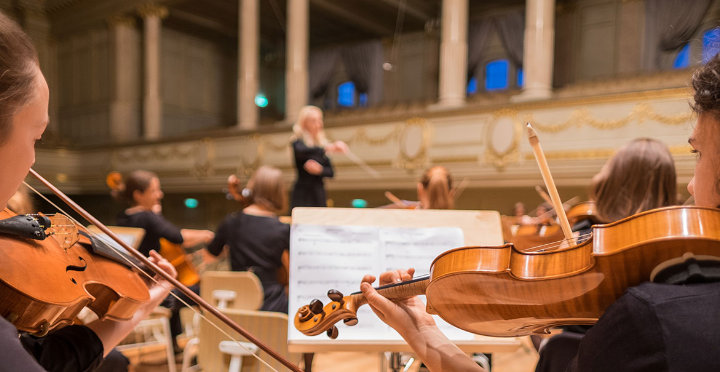
SAMPLED ORCHESTRATION
A ThinkSpace Interactive course. Create MIDI mockups with the realism of a live orchestra.

HOW TO WRITE VIDEO GAME MUSIC
$249
A ThinkSpace Interactive course. Learn to compose and produce non-linear music for the fast-growing scene.
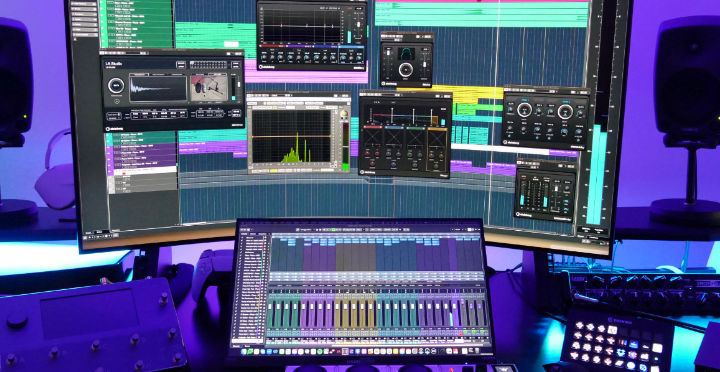
INTRODUCTION TO MIXING
$189
A ThinkSpace Interactive course. Learn from industry pros how compete in the new era of trailer music.
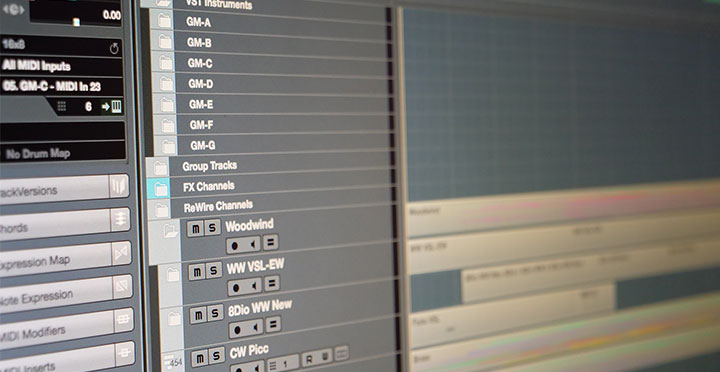
HOW TO SCORE FILMS
$99
The ultimate step-by-step guide that includes films to download and score.
Related Master's Degrees
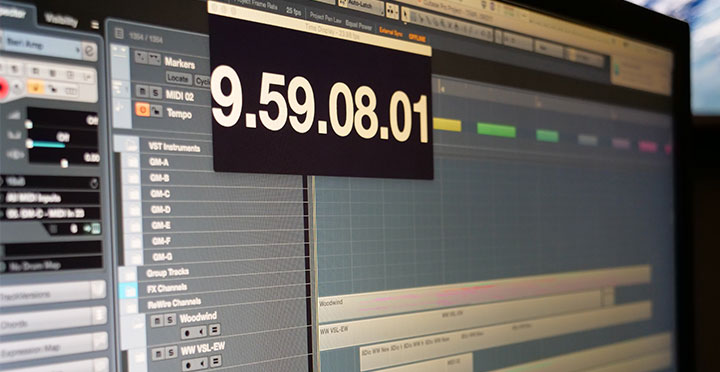
MA PROFESSIONAL MEDIA COMPOSITION
Offering much more than your average Film Scoring Master's, this course teaches you all you need to know about the challenges of writing for film, TV, and other types of commercial media. Hear from professionals with a long history of working in the industry, as well as from those working on the front-lines today.
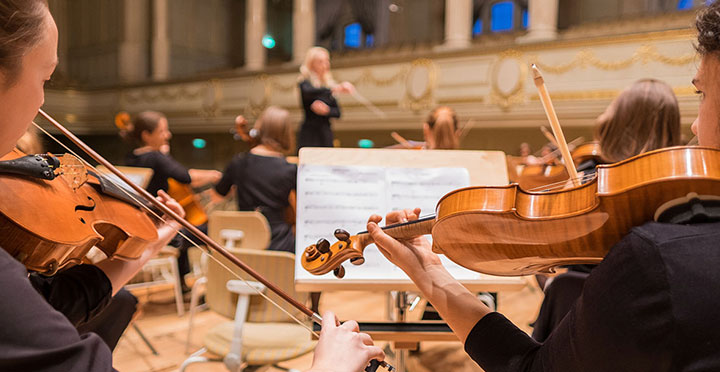
MA ORCHESTRATION FOR FILM, GAMES & TELEVISION
If you want to write uplifting, epic orchestral music for film, games or television, this is the course that will give you the technical and creative skills you need – taking you from first sketch through sampled mock-up, then onto the final recording with a live orchestral session.



